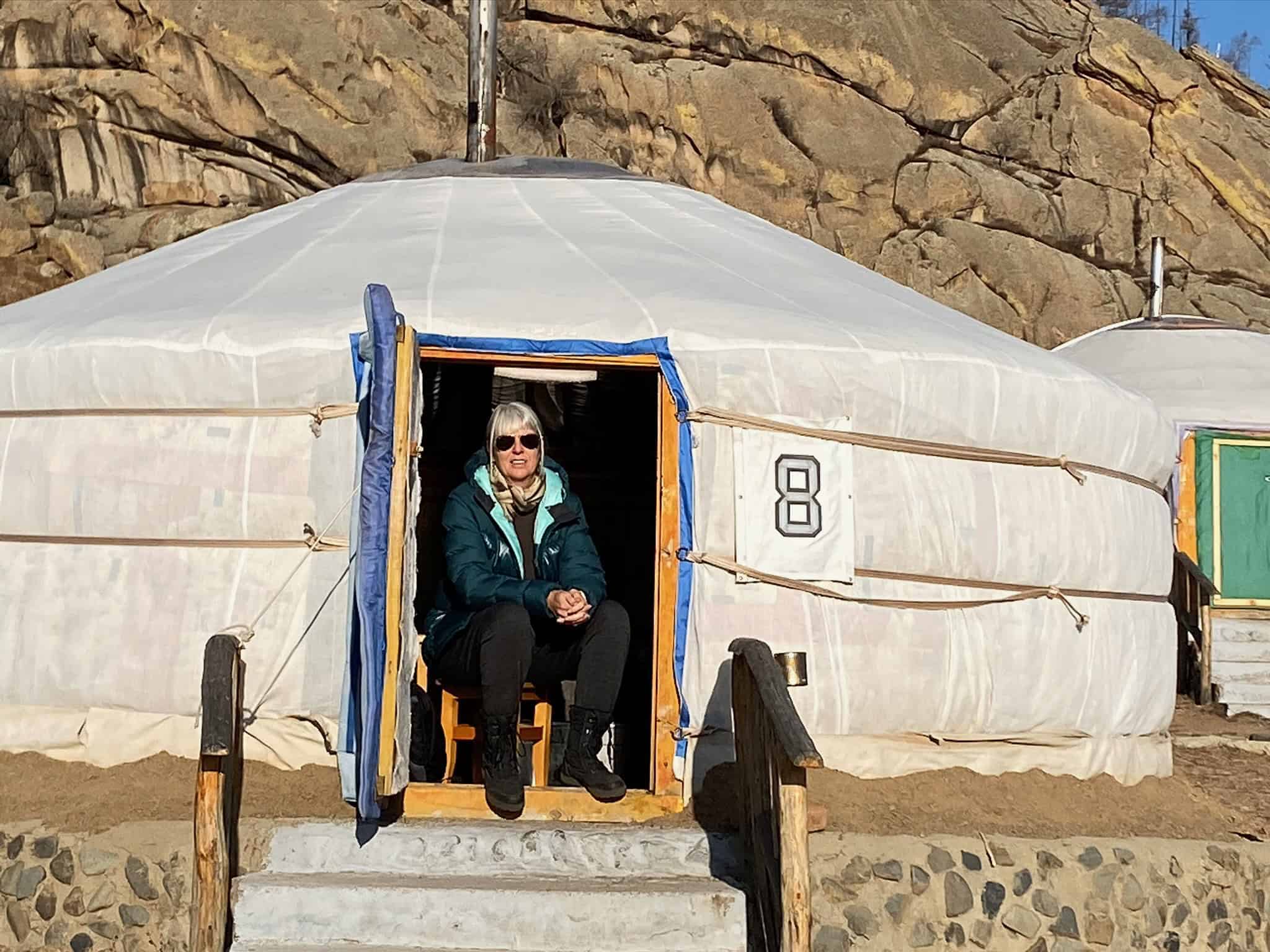Having absolutely no idea what to expect of Mongolia, we are leaving – three days later, very happy with what we have found. Welcoming people, unforgettable scenery, good food and cashmere jumpers. What else would a traveller want?

Alighting the Trans-Mongolian at Ulaanbaatar (UB), capital of Mongolia, it takes 30 odd minutes to journey to our hotel located right on Central Square. Our drivers English is good, and he fills us in on some Mongolian titbits. “Population is 3 million with 45% of those living in UB. The majority of the people are Buddhist”.

Having only escaped 70 years of communist rule in 1992, it’s obvious the cities infrastructure is still feeling the effects of these austere years. Road surfaces are not up to western standards, traffic is congested, subway systems none existent. What we can vaguely see and what is confirmed through talks with locals is that in the past ten years Mongolia and UB have come a really really long way with regards to embracing democracy and the country and city are changing dramatically. We feel it may not be recognisable in another ten years so now is a good time to visit.

After an afternoon of exploration and a good night’s sleep, we find Oyuna, our guide and Khosoal our driver, waiting to transport us out into the Mongolian countryside. It doesn’t take long to escape the city and we find ourselves immersed in that vast, flat, brown countryside we have viewed from the train.

We are on our way to Gorkhi-Terelj National Park to spend the night in a traditional Mongolian Ger, but first stop is the Genghis Khan (Genghis is actually pronounced Chinggis) monument, recognisable from Joanna Lumley’s Trans-Mongolian trip

The afternoon is spent exploring the Gorkhi-Terelj Park, visiting a nearby Buddhist monastery and partaking of a Mongolian lunch before later farewelling Oyuna and Khosoal as we settle into our Ger camp and they head back to UB. With varying descriptions of Gers available over the internet, some flash, some basic – I’m not surprised that we get the relatively basic version. No TV or bathroom here. Just three single beds, a fireplace and a few stools. There is electricity.


It’s an interesting night. When stoked the fire roars and the temperature in the Ger must reach upwards of 35-40 degrees. Within a few hours, however, the outside temperature of minus 12 starts to creep in until it becomes unbearably cold. We give up stoking the fire after midnight and spend the early hours of the morning shivering in our single beds.

Despite the temperature hardships, the outside surrounds more than makeup for the discomfort. It’s beautiful and deafly silent.

The remainder of our time is spent exploring UB. With its large square, National Museum, State Department Store and cashmere jumpers it’s been a fantastic city to have discovered.
Next stop – Lake Baikal, Siberia.
Fun facts – Mongolia is a little smaller than Queensland. An estimated 25-40% of the Mongolian population is still nomadic and live in traditional Gers. English is now Mongolia’s second language. Her main industries are mining and cashmere. And yes, we did buy a cashmere jumper each.





2 Comments
Stephanie
Awesome Emma!! Am enjoying your journey so far. Very interesting.
Emma Scattergood
Thanks Steph. We are thinking of you and everyone else affected by the fires.
Comments are Closed.